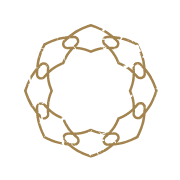Sensation and movement. Know your ABC’s
What do you feel when you move?
The answer to this question is the most important (but least discussed) key to your progress!!
It's really easy to get lost in your thoughts chattering about external input, but not actually pay attention to what you feel internally.
"What did the instructor say?"
"Oh, god. I'm new! Everyone will know I'm a beginner."
"Wait, what is she doing, it looks slightly different to me. Am I doing it wrong?"
“What if I hurt myself--is this safe?”
"This can't be right. Oh, god, what am I doing here? This is a disaster. I can't do this! Why am I here? I want to go home now, and never come back!"
OK, so the last example might be a bit extreme. But I am sure you resonate with some of those sentiments! It's completely normal, but also completely unhelpful.
Thinking about the external factors of exercise will increase the sense that you aren’t in control of your body. This can create a fear of movement. Fear of movement will increase the likelihood you avoid movement, which will increase the chances of getting hurt when you do move. Ignoring the language of the body (sensation) and fixating on thoughts will become a self-fulfilling prophecy.
Fear > keeps you frozen > produces pain
While this might all sound a little airy-fairy, creating a connection between movement and sensation allows you to trust your body and move with more freedom.
Awareness is a skill just like any other. You can build it over time with a non-judgmental, patient approach.
Start from your ABC’s: Awareness – Breath – Center
1. AWARENESS: Start with a body scan.
If you are still working on building your bodily awareness, a simple “body scan” can do absolute wonders. Doing it is easy! Lie on the floor and pay attention to everything that you feel.
How heavy does your body feel against the floor? Is it the same on both sides? Maybe you feel one side more than the other. Spend a couple of minutes and really focus. Notice if you can't settle or relax. Any and all info is great info.
2. BREATH: What is your breath doing?
Are you holding your breath or are you in control of your breath? Are you using your breath to help you through the movement, or is it an afterthought? Can you inhale and exhale easily?
If you have breath control, it is a great sign that you have movement control. However, don’t freak yourself out if you don’t have control of the breath! Just back off the movement, and try
(A) a different approach,
(B) less weight, or
(C) a different range of motion.
This video does a great job of explaining some basic breathing exercises while exercising.
3. CENTER: Are you feeling the center of your body?
The Video above explains the zones of the body and the core. Next, notice whether you feel the effort of the exercise closer to the center of your body, or further away from the center of the body. Do you feel the movement in the belly of the muscle, or do you feel it closer to the joints?
As a general rule of thumb, the closer I feel the movement
(A) to the center of my body, and
(B) in the “belly” of the muscle
versus feeling it in my joints, the more likely I am in control of the movement and load that I am using. There are exceptions, but this cue gives you a nice frame of reference.
To sum up: Learn to speak the language of movement
Awareness – Breath – Center.
The feedback you get from checking these 3 points will change (and increase!) with time and practice. It will become more nuanced and detailed over the years. I can guarantee that the effects will reach into other aspects of your life!
Instead of commanding your body to complete an action, or demanding it to be different, pay attention to sensation. Sensation is your body’s language for movement. When you understand that language, you can build a relationship with your body and it will give you all the information you need. The more you nurture that relationship, the more trust you will build in your body. Start shaving away the external nonsense and focus on the sensation…let it guide you!
